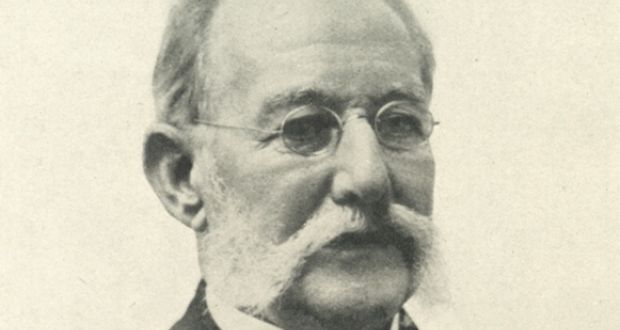When our ship, The City of Brooklyn, emerged from the Panama Canal into the Pacific Ocean, one of our passengers went up to the bridge and borrowed the captain’s binoculars. This man was a retired doctor in the medical corps of the US army and he now wanted to focus on the statue of another doctor. It stands on the waterfront of Panama City, a well-deserved tribute to the memory of Dr Carlos Finlay.
This Cuban doctor is credited with saving the lives of thousands of those who worked at making that great waterway that connects the Atlantic and Pacific Oceans. “He was one of my heroes”, said the doctor, who had just retired. He and his wife had joined our 12-passenger cargo ship in Savannah, Georgia.
During the long voyage to Brisbane, Australia, he told us about Finlay and aroused my interest in this physician.
Finlay’s exhaustive studies into the ravages of yellow fever helped to control a disease that had killed thousands during the early attempts at construction of the Panama Canal.
Born in 1833, he was the son of a Scottish father and French mother who had settled in Havana. He studied medicine in France and in England but graduated from Jefferson Medical College in Pennsylvania in 1855.
When he returned to Cuba he began to study the incidence, distribution and possible causes of diseases . Yellow fever ravaged that country, the cause of many agonising deaths. It was thought that those infected passed it on to others through contact. However, in 1881 Finlay put forward the theory that a mosquito was the prime carrier of the organism that caused yellow fever; a mosquito that had bitten a victim of the disease could afterwards bite and infect a healthy person. The way to counter yellow fever was to eliminate or at least control the mosquito presence.
His theory was not immediately accepted in the medical world but he continued working tirelessly to provide convincing proof of his findings. He was an imposing personage, with a distinguished bearing and impressive whiskers and moustache. He had the advantage of being fluent in French, German and English.
Eventually, in 1900, his findings were fully accepted by a commission led by the distinguished US military physician Dr Walter Reed. Reed and his team conducted intensive experiments and research that proved conclusively what Finlay had promulgated. Yellow fever had devastated the workforce during the two previous failed attempts by the French from 1881 to 1889 to build an artificial waterway across the Isthmus of Panama. Apart from the immensity of the task and the huge costs involved, the workers were decimated by disease, primarily yellow fever. Sickness and accidents accounted for no less than 22,000 deaths. The French companies tried to hide the death rate in case it would discourage new recruits to the workforce.
In 1904 the US government decided to take on the challenge. It had most to gain from a greatly shortened sea route between its east and west coasts. Fully aware of the work of Finlay and Reed, it first began an intensive programme of spraying the mosquito-breeding swamps and ponds with larvicide or oils, fumigating buildings and installing sanitation systems. Hundreds of men paced the ground on and around the workings, draining pools and ponds or dusting them thoroughly with anti-mosquito insecticide. Mosquito netting and window screens were put in place in all living and sleeping quarters. Another initial activity was to replace much of the dilapidated buildings and infrastructure left by the French companies. Good housing, cafes, hotels, water and sewage systems, along with repair shops, warehouses and other amenities, were built and put into operation.
Then the great enterprise began. The US designed and manufactured massive construction equipment and used it with great vigour. Enormous dredges scooped out soil. Power drills hammered relentlessly into rock that was then smashed by giant hydraulic crushers. Over 100 mammoth steam shovels, mounted on railway tracks, carried away millions of tons of soil and stone. Steam-powered cranes moved up and down the site. Cement mixers churned away night and day. For most of the 10 years of construction, the workforce numbered between 30,000 and 40,000 people.
The death rate among them notably declined, although 5,600 workers died of accidents and disease.
The completion of the canal marked the beginning of efforts to develop a yellow-fever vaccine but it took several decades for an effective antidote to be produced.
In the newly independent Cuba, Dr Finlay was appointed chief health officer. He died in 1915, one year after the completion of the Panama Canal.
The US newspapers, aglow with national pride at the completion of one of the wonders of the modern world, began to depict Walter Reed, who died in 1902, as “the man who beat yellow fever”. During his lifetime however, Reed never failed to give full credit to Finlay.
In Havana, at the Plaza Carlos Finlay, stands a striking obelisk, 32 metres high, appropriately shaped like a syringe, as a tribute to this remarkable man
